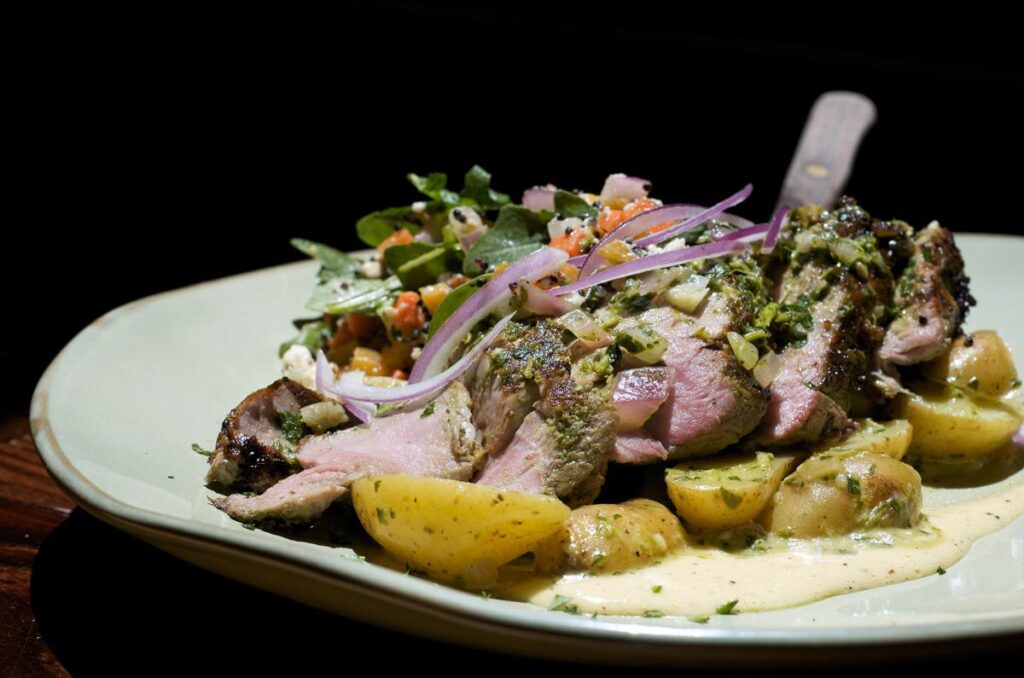With travel starting up again, it’s high time to take a fresh look at St Augustine – – oldest town in America, home of the Fountain of Youth, and gateway to the New World for Spanish explorers in 1565. It has a food culture of its own thanks to a historic past as well as a percolating bar and restaurant scene tapping into its Andalusian roots, down-home Southern traditions and other surprising influences.

St Augustine’s food culture is rooted in the state’s 500-year history. “This particular town has ethnic groups from around the world, which have shaped the cuisine from the early days forward,” remarks Aaron Jockers, a guide with The Tasting Tours, St Augustine. “This means that no matter what kind of cuisine you’re looking for — Spanish, Greek, Polish, French, Italian — you will probably find it here. That said, dishes as well as cocktails will have a different spin on them based on local ingredients and the way these different groups have interacted over the generations.”
“The true spirit of St Augustine is rooted in entrepreneurship, and people have been coming here for ages to make their fortunes and their marks,” he continues. “Different groups brought in their distinctive cuisine with its own set of spices, techniques and preparation techniques. In terms of ‘southern’ tradition, many of our restaurants have a certain intimacy, where you feel like you’ve been invited into somebody’s kitchen. As a whole, restaurants reflect pride in their origins as well as how they’ve found success in St Augustine.”
Jockers’ tour begins at Athena, a Greek restaurant whose mural swaps out typical Greek imagery for the St Augustine shoreline, and moves on to Gaufres & Good, which offers an unexpected mix of Polish and Belgian dishes. Appetizers from The Floridian — which updates traditional Southern and simple seafood recipes — are also on the tour’s menu, as are elegant preparations of just-caught fish, shrimp and clams from Florida waters at St Augustine Fish Camp and Catch 27. Selections between the two restaurants run the gamut from snapper to sheepshead, mahi mahi, triggerfish, flounder and black drum. Decadent frozen bananas covered in dark chocolate from long-time sweets institution Whetstone Chocolate provide a sweet end to this particular tour.
Where Spain Reigns
The ultimate lesson learned from a local food tour is that St Augustine’s culinary roots stretch across the Atlantic to the Iberian Peninsula, and throughout Florida’s adjoining states, Georgia and North Carolina. The branches that have grown out of its kitchens, meanwhile, wind around simply prepared fresh seafood and down home comfort food that never loses its appeal no matter how fancy or ambitious local chefs or cooks may be.

The Casa Monica Hotel & Spa, built in 1888 and resurrected by hotelier Richard Kessler a few years ago, echoes St Augustine’s Mediterranean-Spanish underpinnings. Its opulent Costa Brava restaurant follows suit with a menu of authentic Spanish tapas and main courses and dishes fusing in influences from other Mediterranean countries. The Sunday brunch is the stuff of local legend, thanks to its tapas-to-order and fabled paella packed with fresh seafood.
Rob DeGrassi, who signed on as Executive Chef for the Costa Brava restaurant in Spring 2020, took on the challenge of overhauling the menu to render it approachable but modern while maintaining the integrity of the long-time local favourite for special occasions.
“My goal as a chef is to tie the Spanish influence, particularly of the Costa Brava region of Spain (between Blanes, an hour northeast of Barcelona, and the French border) to locally caught seafood and produce from purveyors in the northeast of Florida,” says DeGrassi. “It is absolutely a chef’s dream to work in a place along a coastline that provides wonderful seafood and a bounty of fresh vegetables and fruit. However, I wanted to differentiate myself from other restaurants and chefs in the area by taking the menu back to authentic Catalan and Spanish cooking.”
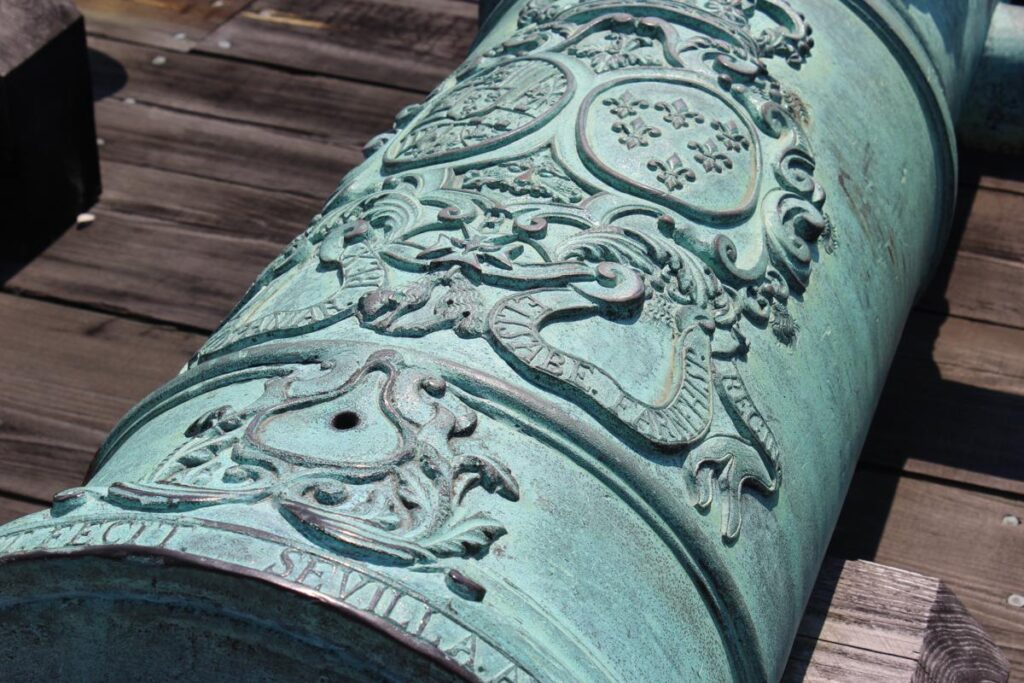
The New Jersey native, who received his Bachelor’s Degree in Culinary Management at the Art Institute of Fort Lauderdale, built a resume that in the South includes Chef de Cuisine at the Homestead Resort (the oldest inn/hotel in the United States) in Hot Springs, Virginia; Banquet Chef at Omni at Amelia Island; and Premium Chef for the Jacksonville Jaguars, managing the owner’s suite and VIP events. His arrival at the Casa Monica is a natural progression that allows him to research and explore local traditions and dishes while applying his impressive experience.
“I definitely love that (management) is really letting me run my kitchen the way I want to do it,” he continues. “While I have been allowed to express my creativity, especially when making my weekly specials, I am also paying attention to what the guests want. If there is a major challenge, it is educating my team and our customers on the origins of the dishes we are serving, looking at the traditions, techniques and ingredients going into them. I want to encourage them to try different things but make everything approachable.”
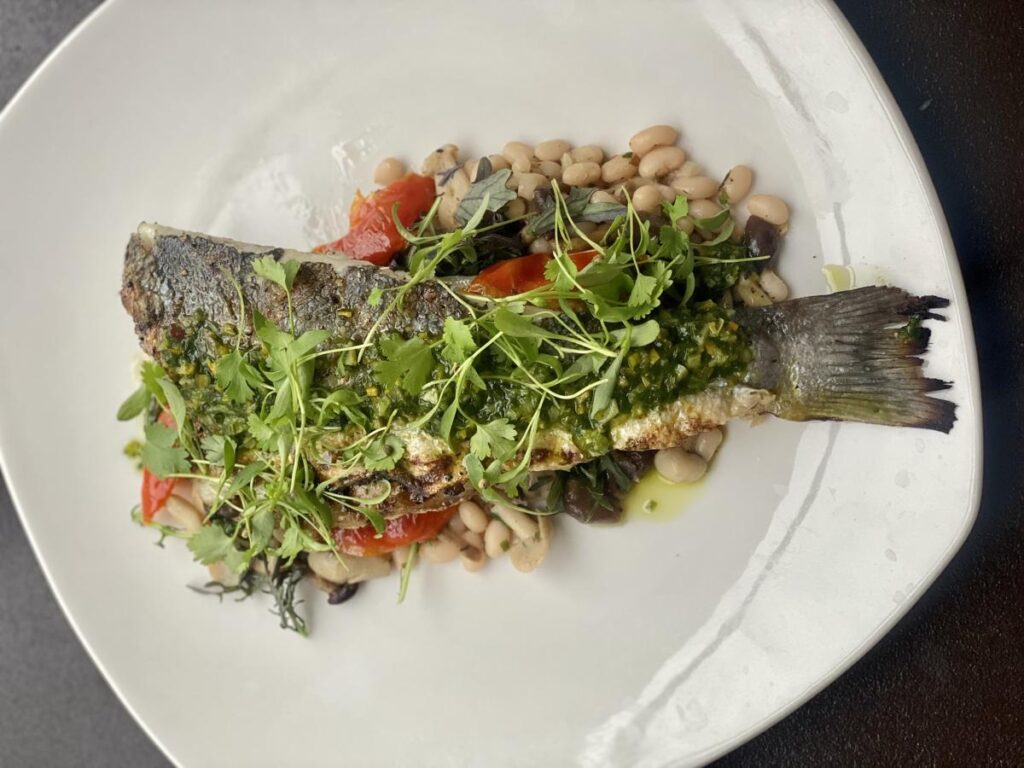
Modern Love
Jeff and Genie McNally, who own The Floridian, describe their kitchen as a bastion of Southern US/Low Country/Creole cooking, with flavours and ingredients they say shaped the St Augustine palate over the last couple of hundred years.

“As North Florida shares a good amount of heritage with Georgia and South Carolina, we can trace the development of a ‘cuisine’ as it has been moved by the various peoples of the American South — especially the African-American community,” says Genie McNally. “This combination of factors certainly makes our food unique. We are fortunate to have a tremendous local following, and have also found ourselves acting as sort of culinary ambassadors to the visitors who come to our fair little city seeking a uniquely St Augustinian experience.”
Jeff McNally also thinks of The Floridian as a crossroads of several agricultural Florida communities, driven by the influences from Spanish, Menorcan, African, Caribbean and Creole cultures. Their ability to draw upon all of these different sources with equal enthusiasm results in a menu focused in equal parts on seafood sourced from local waters, produce from local purveyors, and livestock raised specifically for The Floridian just a few miles up the road.
“It’s a small town, in a very good sense,” Jeff affirms. “We have always worked hard to walk the fine line between ‘accessible’ and what we find to be interesting for customers. Although we strive to rework familiar comfort food and ingredients, we do it respecting the heritage of these items.”
Genie describes The Floridian’s popular Maque Choux as their ode to summer in the South, while also being a spin on a Creolized Native American dish. She says it is rooted in St Augustine from its inception, in terms of “Native American meeting African American, Louisiana and coastal cuisines.” Corn, peppers and tomatoes are sourced from Fresh Start Veggies in neighbouring Hastings, cheese from their ‘goat cheese lady’ Sharon Terk at Terk’s Acres, St Augustine shrimp from The Seafood Shoppe, and sausage from their hog farmers at CartWheel Ranch.
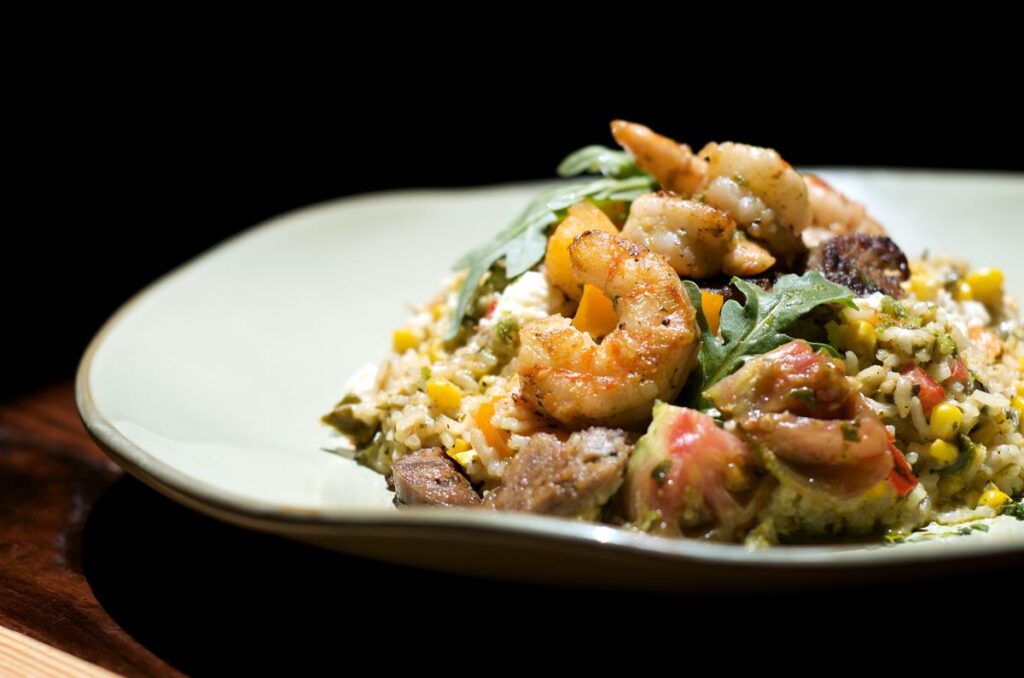
The Toasts of the Coast
The St Augustine Distillery and The Ice Plant Bar, located a ten-minute walk from the city centre and artfully built into a 1927 ice factory, is at once one-stop shopping for craft liquor connoisseurs and modern cocktail fans. Although each business is independently operated, and St Augustine Distillery spirits are proudly integrated into the city’s better bar programs, a visit to the distillery followed by drinks and dinner at the Ice Plant will give one a full appreciation of the entrepreneurial spirit (and artistry of Chef Laird Boles) that’s shored up St Augustine’s image in the last few years.
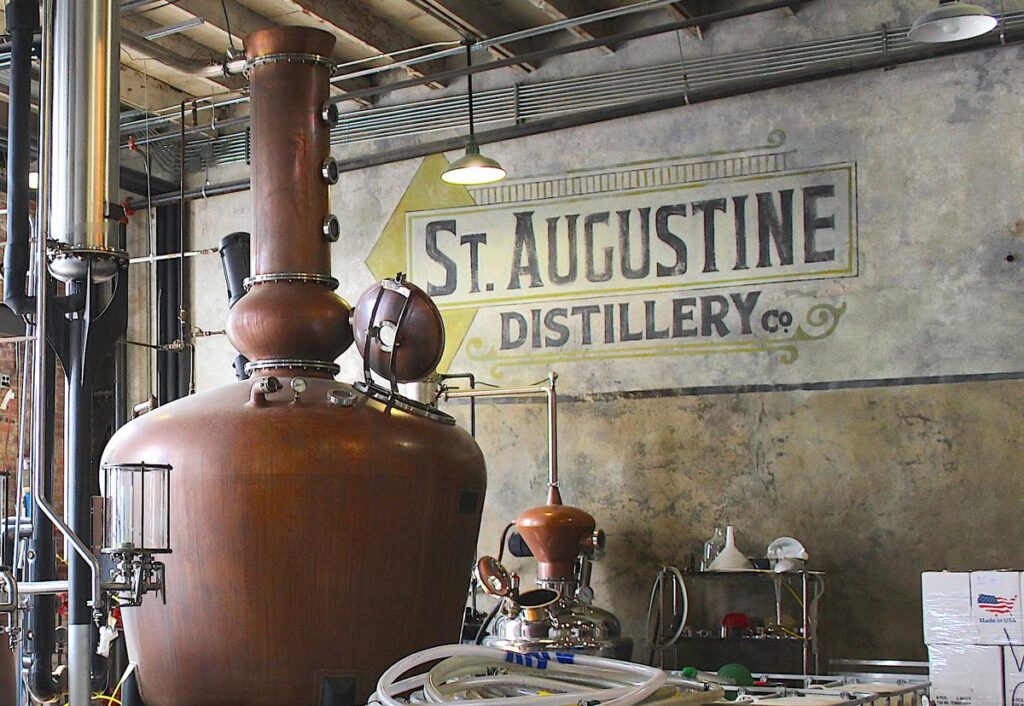
“We use regional agriculture, such as Florida wheat and corn for our bourbon and South Florida sugar cane syrups and molasses for our rum,” says Philip McDaniel, co-founder and CEO St Augustine Distillery. “We have a great partnership with the Florida Department of Citrus, and promote Florida citrus in much of what we do. In addition to offering products visitors will love and locals can be proud of, we also have an incredibly community minded outlook at the St Augustine Distillery. We created 40 local jobs, and partnered with organizations such as the St Augustine Amphitheatre, Lincolnville Community Garden (we compost our lime rinds, ginger pulp, and coffee grinds), and sponsor local beach clean-ups with Keepers of the Coast.”
The Ice Plant, opened in 2013, established its unique niche through reintroducing customers to the craft of ice harvesting by freezing purified water in large blocks as the original plant had done in the early 20th century. The slower-melting, higher quality ice, in turn, results in drinks that are not only balanced, but bring an added dimension of “cool” to modern and traditional drink recipes.
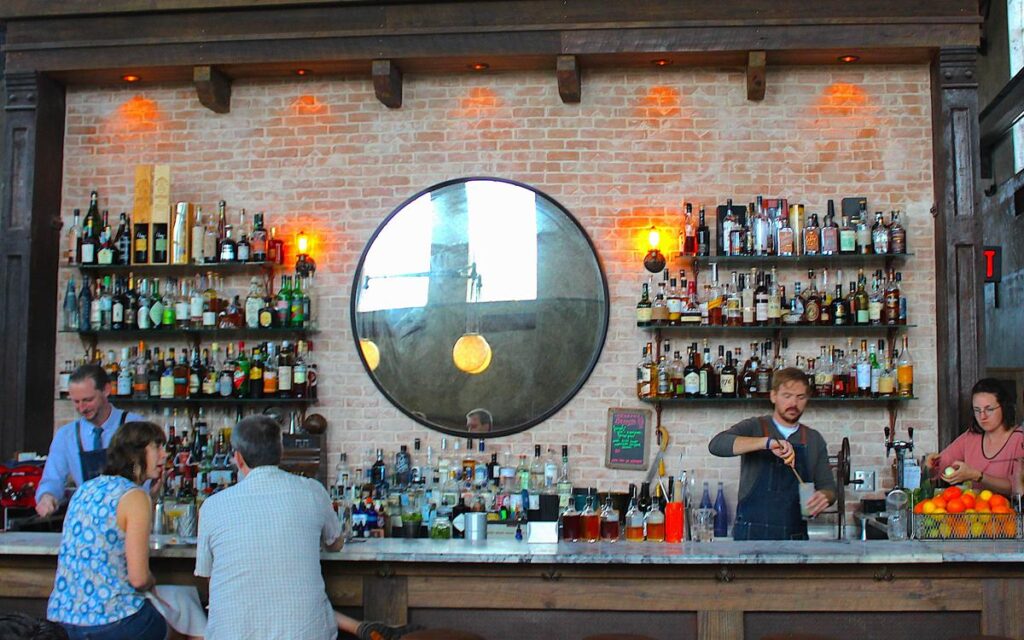
As one would expect in a citrus growing hub like Florida, food and drink menus seasonally incorporate local citrus and fruit whenever possible. Although the comfort element of Southern Cooking expresses itself in the food menus, he observes customers are looking for lighter alternatives consistent with the balmy weather and their own well-being.
“I’ve seen a good trend in food and drink since we opened up,” says Zach Lynch, The Ice Plant’s former Bar Manager. “I think more people are caring more about what they drink, and it’s starting to show in the other bars and restaurant’s menus in town. There are now more places to go out and get a balanced drink and enjoy a bartender that knows their stuff.”
Sangrias, Forgotten Tonic and Tini Martini are among the bars following suit with creativity and determination. Tini Martini, a teeny space inside the Casablanca Hotel, has a speakeasy feel and a beach view. However, what sets it apart is that the potent classic and original cocktails are often served with the shaker… it’s practically like getting two drinks for the price of one. Sangrias, which also serves Spanish tapas, has an impressive selection of sangrias and punches with locally picked fruit.
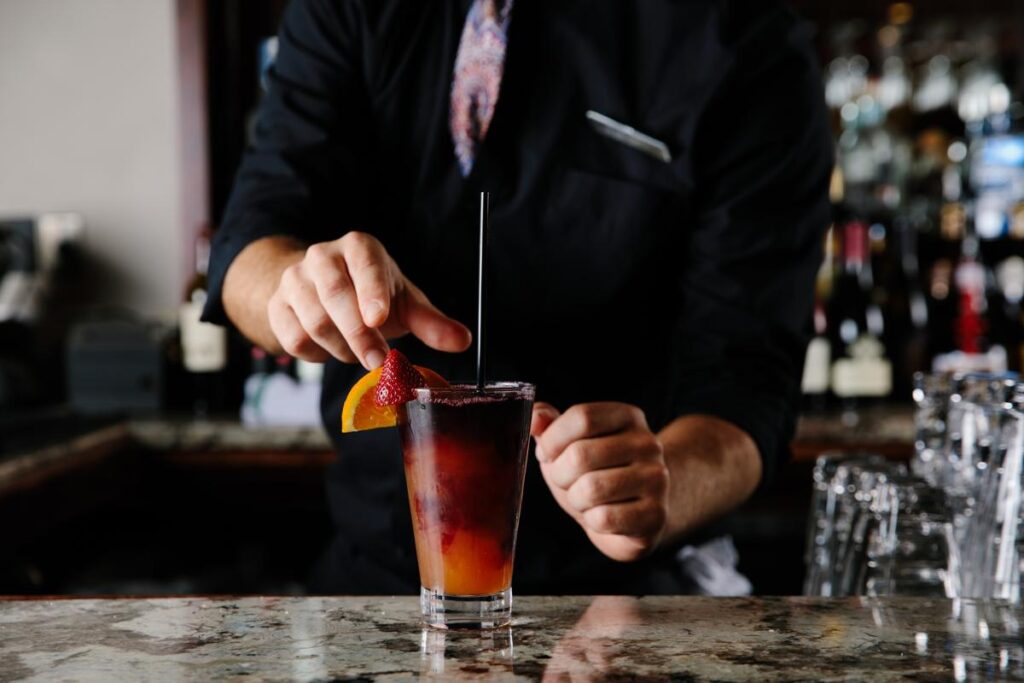
Forgotten Tonic contrasts with the other Aviles Street establishments in that it is all about modern cocktail experience, from its self-illuminating menus to house specialties, some inspired by its staff (Kaley’s Cosmo, with Tito’s Vodka, Elderflower Liqueur, Pineapple and Lime Juice) or using local products (Fountain of Youth Martini, with St Augustine Vodka, Sweet Blue Liqueur, agave, lemon and lime topped with Champagne).
On the local craft beer scene, Ancient City Brewery leads the pack, producing the superb (Ponce’s) Pale Ale and (Anastasia Island) IPA in their regular year-round collection, while putting out limited-edition delights like Castillo Coconut Porter which, according to the brewers, captures the geographic and historic attributes of St Augustine. The dessert-y brew is crafted with raw organic coconut and finished with Northern Brewer hops, and sports malty, dark chocolate notes. Other Ancient City creations found only at the tasting room have included a Key Lime Kolsch, Pecan Nut Brown Ale and Black Cherry Ale. Another incentive to visit the tap room is to take in the local scene, with a pool table, darts, games and large screen TV’s.
I love bigger markets, but being in a smaller market definitely has some advantages because the healthy competition we breed is friendly and kinda fun,” sums up Lynch, now a Diageo Hospitality Partnership educator. “Everybody’s in it to give people a good drink and elevate the food culture in a city that deserves more recognition.”
While the preservation of traditions is a thread weaving through many of St Augustine’s kitchens, Jockers notes that restaurateurs also look to stay relevant by taking dietary needs and sustainability into consideration.
“With such a high degree of competition in this small city, the best chefs have to be focused on all the changes, or they’re just not going to last,” cautions Jockers. “Many first time visitors are amazed that this town exists, and has a dining culture as far removed from chain restaurants as you can get.”
